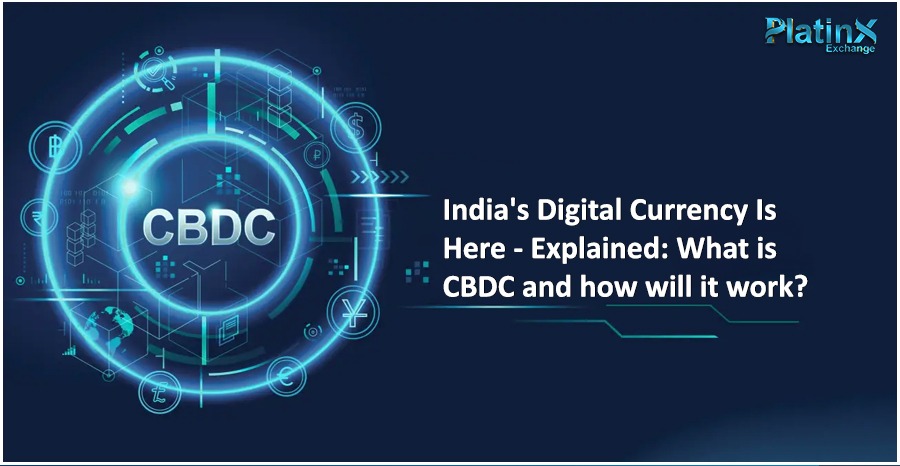India has recently seen a massive record of 14 lakh crore rupees in transactions under the UPI payments in March 2023.
People are getting more and more comfortable with making the digital transaction. The Central Bank of India (RBI) also wants to achieve another milestone in the digital payment system by introducing CBDC retail pilots.
The Central Bank Digital Currency (CBDC) is an electronic version of the physical currency backed by the government as a substitute for private digital currencies. Based on blockchain technology, it would be a more secure and safe payment ecosystem.
CBDC Vs UPI
The government has not launched CBDC as a replacement for the UPI. UPI has become a successful payment system in India impacting the lives of millions of people in India. Before introducing the UPI, other payment methods like IMPS and RTGS were there.
They are also there now after introducing the UPI. This shows that CBDC can also coexist easily with the UPI.
How will CBDC Work?
As per the RBI information, CBDC will be able to work in both low internet or no internet connectivity areas. This type of operability takes Indian Financial Services to the next level, especially in the rural areas of India.
Why is RBI introducing CBDC?
RBI believes that the introduction of a digital currency can strengthen India’s digital economy.
Here are some reasons why RBI introduced CBDC in India.
- It will reduce the cost associated with physical cash management.
- Support the cause to make India a less cash economy.
- To make the financial inclusion of all people.
- The use of CBDC in exploring the opportunity in cross-border transactions.
What Government say about CBDC?
The Union Minister of State Finance has stated that the CBDC (e-rupee) will be a role in both the wholesale and Retail segments.
In the wholesale segment, the use of CBDC is to make settlements in interbank transfers.
On the other hand, the retail segment includes the private sector, non-financial consumers, and businesses.
The minister has further stated that the RBI has chosen eight banks for the phase-wise introduction of the CBDC.
The first phase includes the banks like the State Bank Of India, the ICCI Bank, the Yes Bank, and the IDFC Bank.
The second phase includes another four banks the Bank Of Baroda, the Union Bank Of India, the HDFC Bank, and the Kotak Mahindra Bank.
Benefits of CBDC in the Indian Banking Ecosystem
There is no doubt that the introduction of the CBDC will have a direct visible benefit to the Indian Banking Ecosystem. The backing of RBI to the CBDC creates a high level of trust among the masses.
This secure financial system can be easily used by citizens, businesses, and government agencies.
This digital currency could be a great alternative to cash and reduces RBI’s expenditure on money printing. As we all know that counterfeiting is a global problem around the world. The introduction of a digital currency can help in reducing the counterfeiting problems. Also, the availability of digital currency will be 24*7 and can be used for both Peers to Peer and Peer to merchant transactions.

